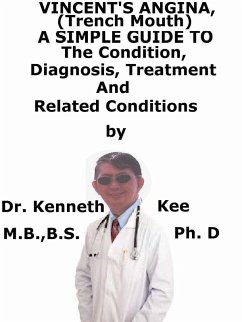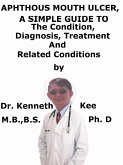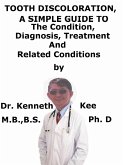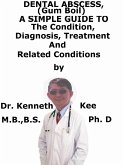Vincent's angina is a pharyngeal infection with an ulcerative gingivitis caused by:
1. Borrelia vincentii - a spirochete
2. Fusiformis fusiformis - a Gram -negative bacillus
Acute ulcerative gingivitis that happens without an accompanying pharyngeal infection is termed Vincent's infection.
Acute ulcerative gingivitis was frequent in the First World War when it was known as trench mouth.
It is known as Trench Mouth because of the smell from the mouth.
This is a progressive painful infection with ulceration, swelling and sloughing off of dead tissue from the mouth and throat due to the spread of infection from the gums.
Vincent's angina is an infection of the gingiva or the gums that rapidly progresses from inflammation to swelling, ulceration, and necrosis (tissue death).
Hence it is also called acute necrotizing ulcerative gingivostomatitis (ANUG).
The dead tissue and bacteria which grow in the lesions produce a grayish-white pseudomembrane that can be readily seen in the gums.
The causative organisms are mostly anaerobic bacteria, especially Fusobacteria and Spirochete species.
Predisposing factors are poor oral hygiene, smoking, malnutrition, psychological stress and immunosuppression (sub-optimal functioning of the immune system).
This disease, along with necrotizing (ulcerative) periodontitis (NP or NUP) is classified as a necrotizing periodontal disease, one of the seven general types of periodontitis.
The often severe gingival pain that characterizes ANUG differentiates it from the more frequent chronic periodontitis which is seldom painful.
ANUG is the acute presentation of necrotizing ulcerative gingivitis (NUG), which is the normal course the disease takes.
If not properly treated or neglected, NUG may become chronic and recurrent.
There is abrupt onset of:
1. Gingival pain and bleeding
2. Foul metallic taste
3. Halitosis
4. Enlarged, tender cervical lymph nodes
5. Fever, malaise, anorexia
Oral examination shows punched-out, ragged gingival ulceration
If the pharyngeal mucosa is also inflamed, then this indicates Vincent's angina
Vincent's Angina is diagnosed by:
1. Dental examination - a gray film or pseudomembrane along the gums is indicative
2. Buccal smear for culture and sensitivity of micro-organisms to antibiotics
Treatment
The ulcerative gingivitis in Vincent's Angina reacts well to penicillin V 500 mg / 6h PO combined with metronidazole 400 mg / 8h PO.
Immunocompromised patients may not respond as well as those who are immunocompetent.
Treatment primarily requires pain relief and bacterial eradication.
Analgesics are given in such cases.
Also, the oral mucosa is cleaned by removing plaque and food debris by oral irrigation.
An antimicrobial mouthwash is advised and patients are asked to strictly observe oral hygiene.
In serious cases the mechanically scraping off the dead tissues (debridement) or hard deposits of tartar from the mouth is performed under local anesthesia.
Because teeth brushing are very sore during an attack, the mouth should be kept clean by the use of regular mouth washes.
The patient should be told to pay careful attention to oral hygiene after the attack in order to help prevent recurrence:
1. Good oral hygiene
a. Brushing teeth twice a day with fluoride toothpaste.
b. Cleaning between teeth daily with floss.
2. Dental debridement
3. Mouth washes
4. Antibiotics -penicillin or erythromycin may be required to clear infection
5. Avoid smoking
TABLE OF CONTENT
Introduction
Chapter 1 Vincent's Angina
Chapter 2 Causes
Chapter 3 Symptoms
Chapter 4 Diagnosis
Chapter 5 Treatment
Chapter 6 Prognosis
Chapter 7 Gingivitis
Chapter 8 Strep Throat
Epilogue
Dieser Download kann aus rechtlichen Gründen nur mit Rechnungsadresse in A, B, CY, CZ, D, DK, EW, E, FIN, F, GR, H, IRL, I, LT, L, LR, M, NL, PL, P, R, S, SLO, SK ausgeliefert werden.









